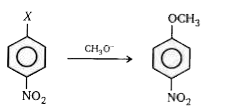
above reaction is an example of Nucleophilic aromatic substitution. Which of the following halide (-X) is most readily replaced.
A
_F
B
−Cl
C
−Br
D
−I
Text Solution
The correct Answer is:A
Fluoride is the most reactive leaving group in nucleophilic aromatic substitution, iodide the least reactive.
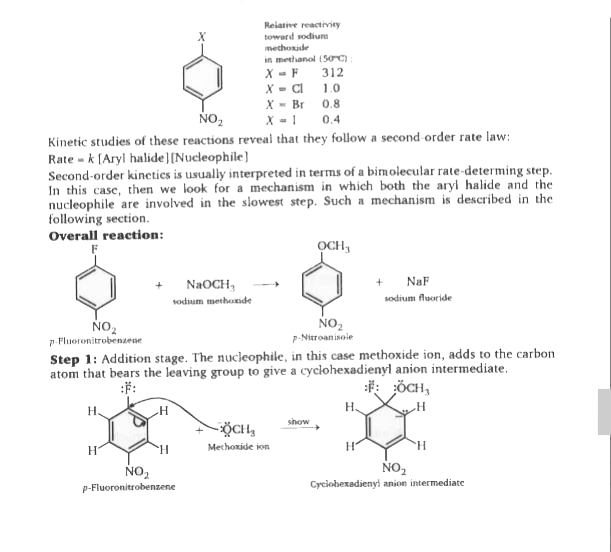
Step 2: Elimination stage. Loss of halide from the cyclohexadienyl intermediate restores the aromaticity of the ring and gives the product of nucleophilic aromatic substitution.
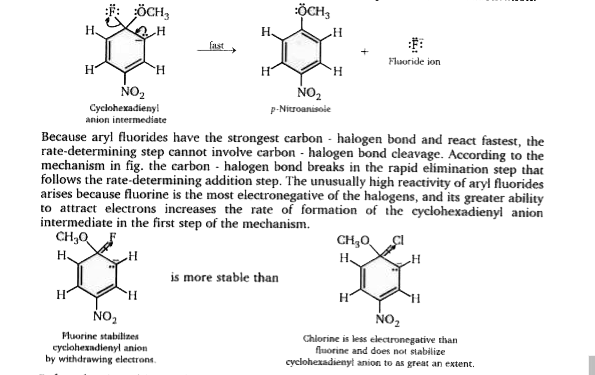
Before leaving this mechanistic discussion, we should mention that the addition elimination mechanism for nucleophilic aromatic substitution illustrates a principle worth remembering. The words activating and deactivating as applied to substituent effects in organic chemistry are without meaning when they stand alone. When we say that group is activating or deactivating, we need to specify the reaction type that is being considered. A nitro group is a strongly deactivating substituent in electrophilic aromatic substitution, where it markedly destabilizes the key cyclohexadienyl cation intermediate.
|
Similar Questions
Knowledge Check
Which of most reactive towards nucleophilic aromatic substitution.
A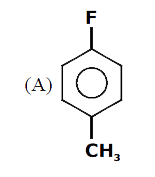 B
B C
C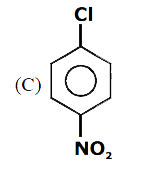 D
D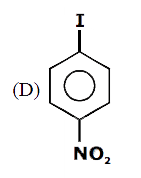
Which represents nucleophilic aromatic substitution reaction ?
AReaction of benzene with Cl2 in sunlightBBenzyl bromide hydrolysisCReaction of NaOH with dinitrofluorobenzeneDSulphonation of benzeneWhich represents nucleophilic aromatic substitution reaction ?
AReaction of benzene with Cl2 in sunlightBBenzyl bromide hydrolysis with waterCReaction of NaOH with dinitrofluoro benzeneDSulphonation of benzene
Which of the following would react most readily with nucleophiles ?
View SolutionWhich of the following would react most readily with nucleophiles ?
View SolutionWhich of the following reactions is an example of nucleophilic substitution reaction?
View SolutionWhich of the following reactions is an example of nucleophilic substitution reaction?
View SolutionMost reactive towards SN-Ar (Nucleophilic Aromatic Substitution)
View Solution
